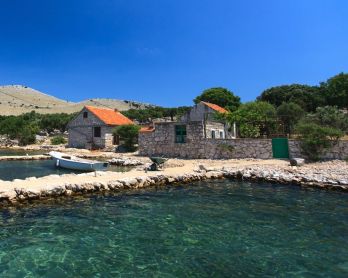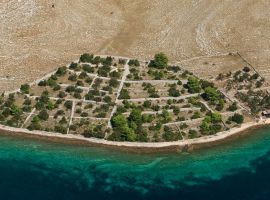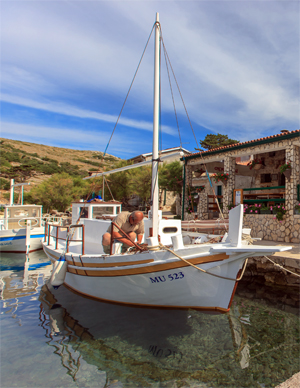

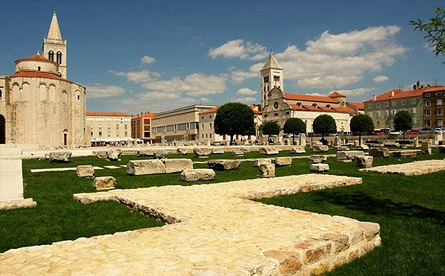
The symbol of the city, and also the most famous monumental edifice in Croatia from the early Middle Ages, the church of St.Donat, originally called the Church of the Holy Trinity. characteristic
cylindrical shape and extreme height (27 meters), at it's time was the real construction venture.
Under the foundations of the church of St. Donat and the Bishop's Palace, extends pavement main square from Roman times - Forum. It is the largest area (90 x 45 m) of its kind on the east side
Adriatic. The founder was his first Roman Emperor Augustus, as evidenced by two stone inscriptions from the 3rd century, when construction and completed. Only original sidewalk and stairs with two decorative monumental columns, of which one is on its original place, are preserved today.
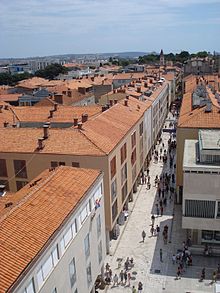 From the Forum to
People's Square extends street Kalelarga or Wide Street, the main and most famous street of Zadar. It extends in an east-west direction. There is a Croatian theater, and the People's Square Town lodge, the church of St.Lawrence (the oldest building on the Square from the 11th century), the Town Guard and palace Ghirardini.
From the Forum to
People's Square extends street Kalelarga or Wide Street, the main and most famous street of Zadar. It extends in an east-west direction. There is a Croatian theater, and the People's Square Town lodge, the church of St.Lawrence (the oldest building on the Square from the 11th century), the Town Guard and palace Ghirardini.
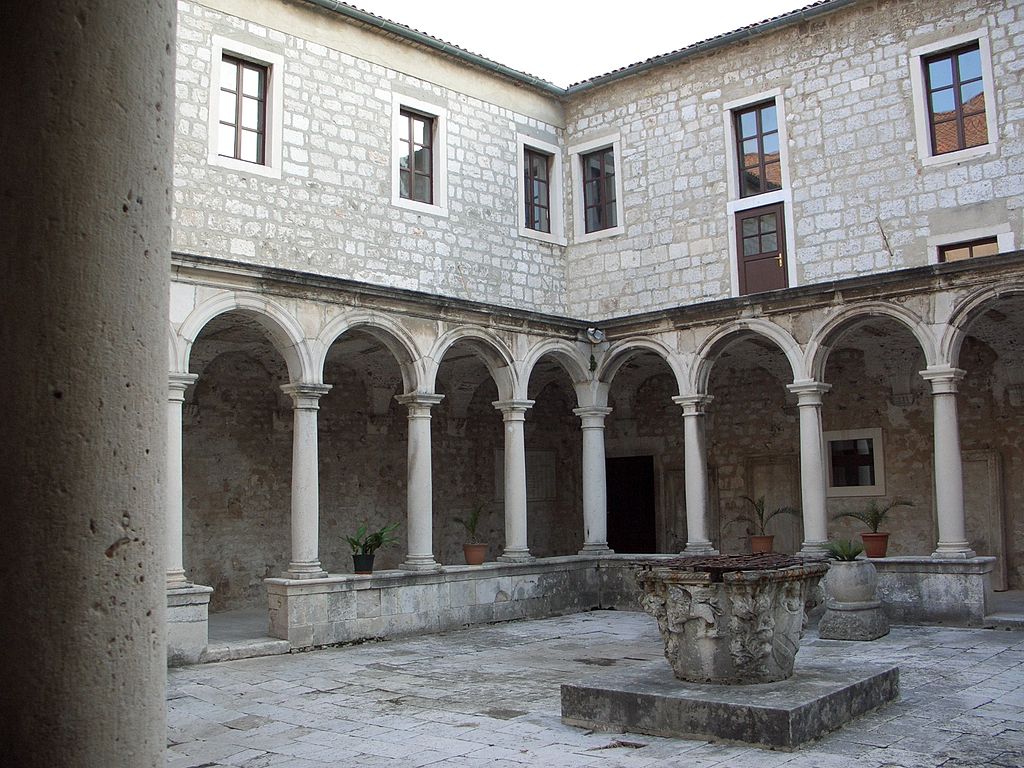 There are many churches in this area, of which we should mention Zadar Cathedral of St.Stošije, recognizable by its bell tower, which dominates the whole city panorama. There are also the church of St. Grisogono (the patron saint of city), Chirch of St.Šimuna (where a gilded casket of St.Šimun is kept. It's the most valuable monument of goldsmith workmanship), Chirch of St.Dominic (where the first university was located, which is mentioned at the end of the 14th century) and Chirch of St. Francis (where the famous Zadar Peace was signed).
From secular cultural monuments are the most important Providurova Palace and the Palace Grisogono, Nassis and Petrizio.
There are many churches in this area, of which we should mention Zadar Cathedral of St.Stošije, recognizable by its bell tower, which dominates the whole city panorama. There are also the church of St. Grisogono (the patron saint of city), Chirch of St.Šimuna (where a gilded casket of St.Šimun is kept. It's the most valuable monument of goldsmith workmanship), Chirch of St.Dominic (where the first university was located, which is mentioned at the end of the 14th century) and Chirch of St. Francis (where the famous Zadar Peace was signed).
From secular cultural monuments are the most important Providurova Palace and the Palace Grisogono, Nassis and Petrizio.
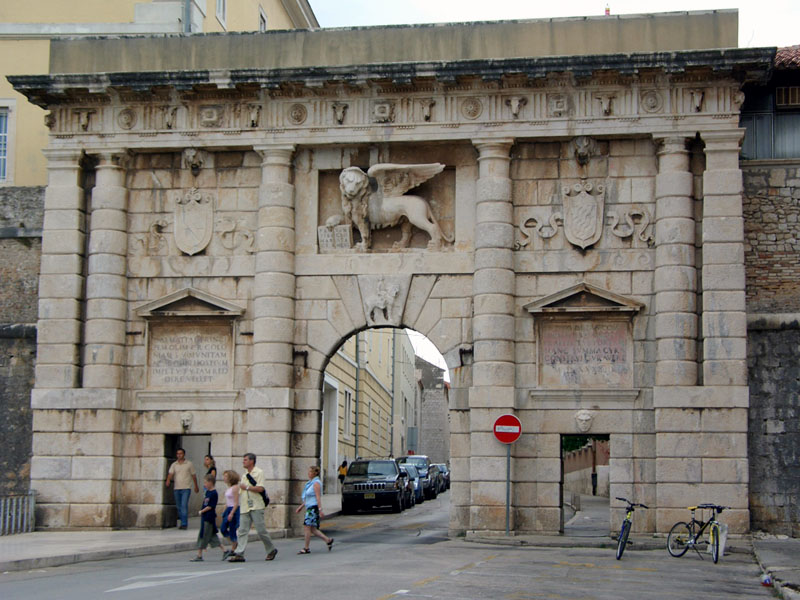
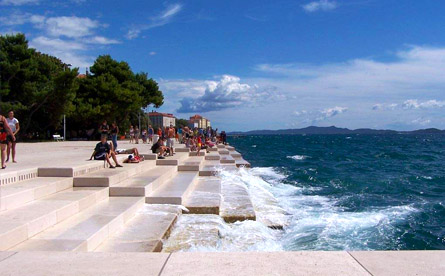
The largest part of the city fortification ring is from the 16th century, although part of wall dates back to the Middle Ages and Roman times. The most famous parts of the wall are Land Gate (formerly the main entrance to the city), Sea Gate and Captain
tower, located near the famous Five Wells Square.
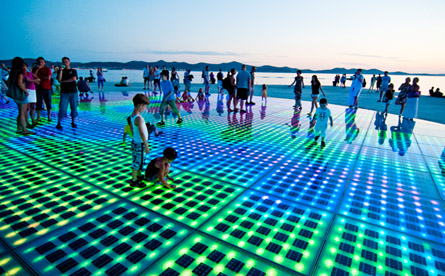 What still adorns the Old Town is the
representative promenade overlooking the Zadars harbor, such as the coasts of King Petar Kresimir IV. and the Istrian coast, where the new city symbols, Sea Organ and
"Pozdrav Suncu" - Sun Salutation are built.
What still adorns the Old Town is the
representative promenade overlooking the Zadars harbor, such as the coasts of King Petar Kresimir IV. and the Istrian coast, where the new city symbols, Sea Organ and
"Pozdrav Suncu" - Sun Salutation are built.
Cruising the Kornati labyrinth, exploring islands and bays offer special experience. Church of Lady o'TARAC and small fort Tureta are only some elements of valuable cultural Kornatis heritage you should visit! Kornati are with a reason called "the boaters paradise"!
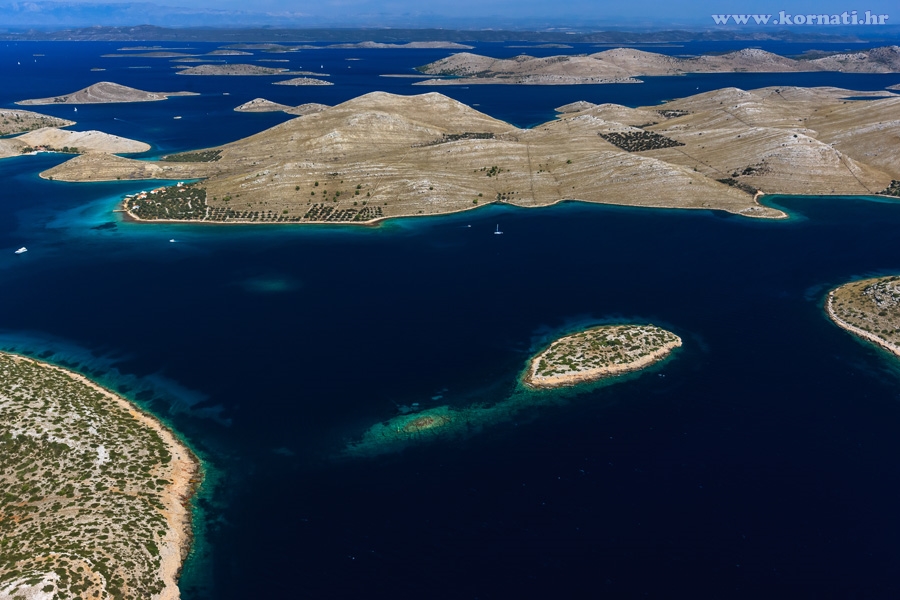
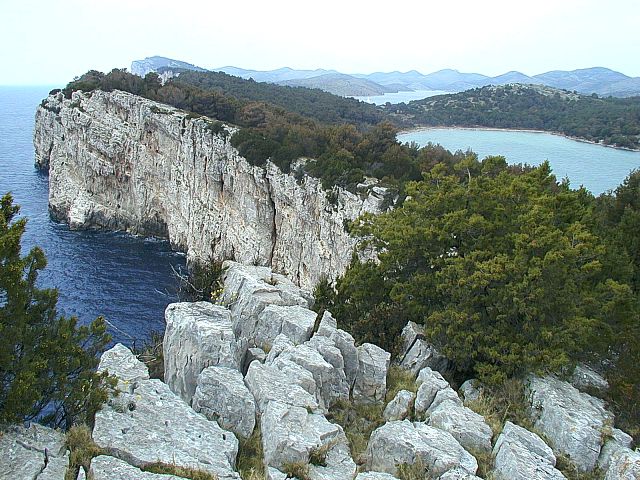
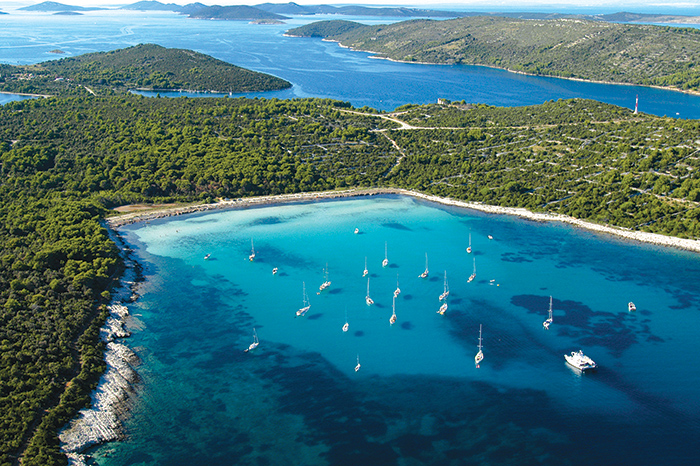
For lovers of the sea depths, the beauty of the underwater world of the Kornati are special challenge. Dive and meet wonderful colorful landscape with a "forest" of coral, rich in fish, ... that beautiful Kornati's underwater!
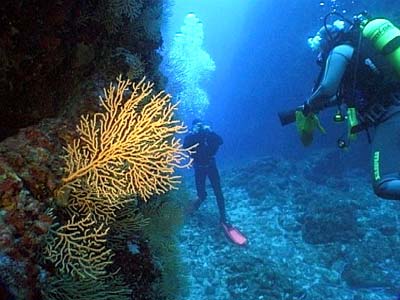
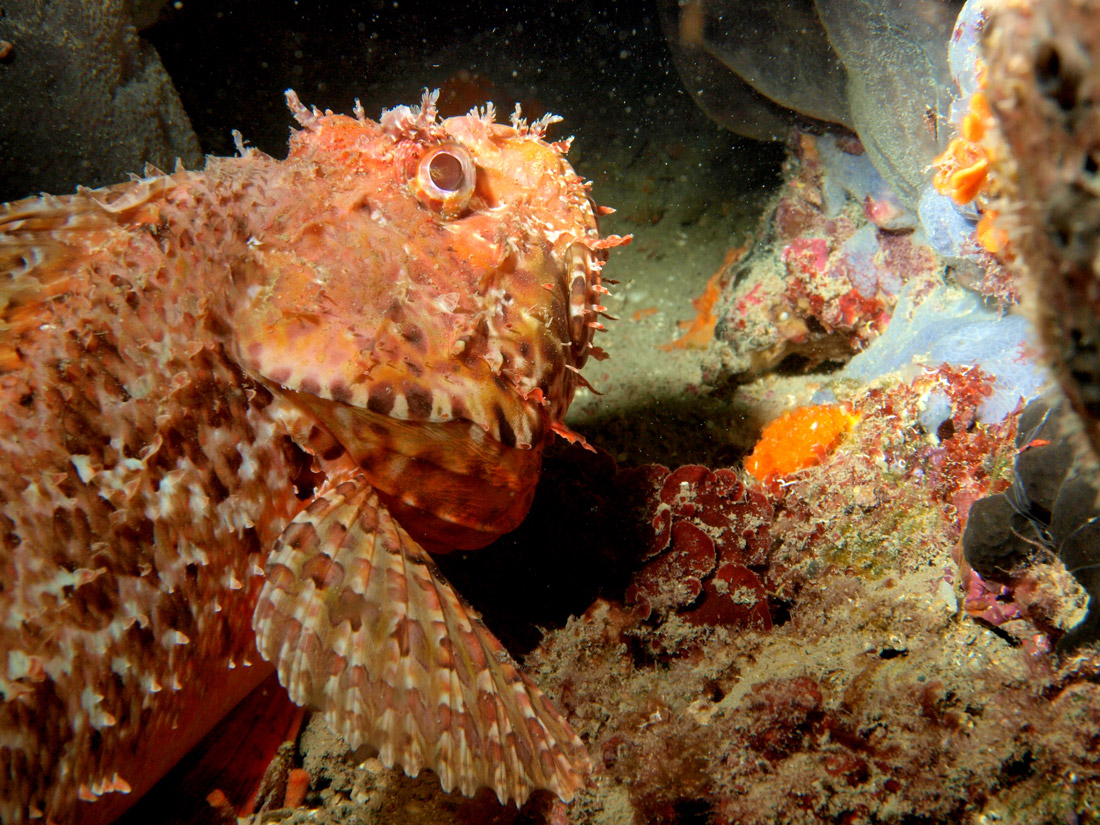
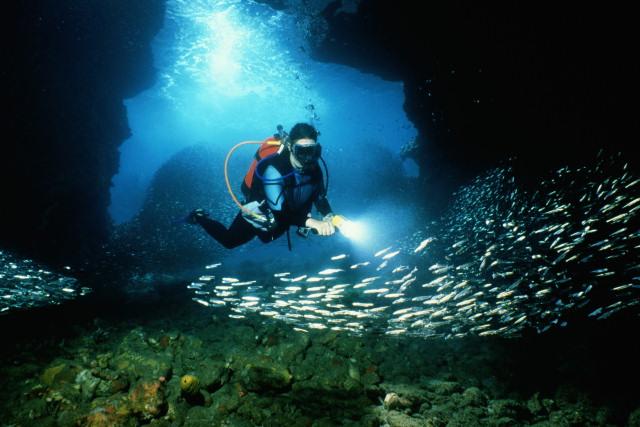
Walking to the high viewpoint visitor can experience magnificent landscapes offering a unforgettable view of the islands. Walking on country roads, olive groves, reminiscent of a fertile hands of "Kurnatari" who maintain Kornati such as they were.
